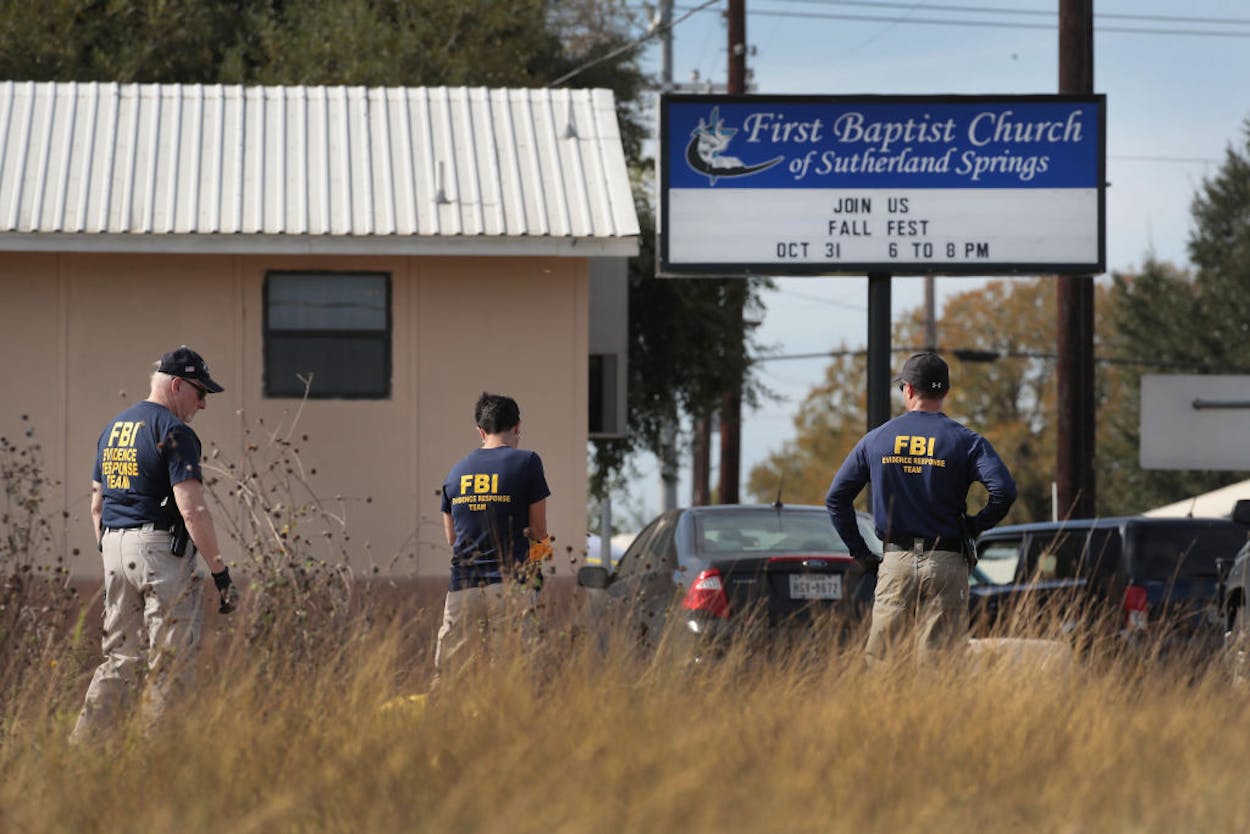Multiple law enforcement agencies continue to investigate the mass shooting at the First Baptist Church in Sutherland Springs on November 5, and the shooter’s blood-spattered cell phone could provide key information—if only investigators had access to it. The San Antonio Express-News reported on November 16 that the Texas Rangers have served a search warrant to Apple, seeking data on Devin Kelley’s encrypted iPhone.
In the search warrant, the Rangers ask for digital photos, messages, documents, and other data that Kelley might have kept on his phone. They also filed warrants for a second cell phone found near his body and for files stored in Kelley’s iCloud account, which is a digital archiving feature from Apple. As of press, the company has not responded to the Rangers’ requests.
Apple has clashed with investigators seeking access to the iPhones of mass shooters before, most controversially after the mass shooting in San Bernardino, California in 2015, when Apple balked at a court order requiring them to hack into the San Bernardino shooter’s password-protected iPhone for the FBI. The dispute sparked a long and nasty legal battle between the FBI and the tech company. Apple CEO Tim Cook claimed the court order was an “overreach by the U.S. government,” and characterized the FBI’s request as asking the company to create software that would serve as a “backdoor” through the company’s encryption technology, calling it the “software equivalent of cancer.”
As Apple and the FBI duked it out in court, the battle developed into a larger war between the federal government and Silicon Valley over privacy and public safety. Tech companies—including Google, Facebook, and Microsoft—argued that fulfilling such a request from law enforcement would jeopardize the security of all of their other customers. The FBI, meanwhile, claimed that concerns over customer privacy were overblown because they were only asking for access to a single phone. President Barack Obama even weighed in, urging tech companies to cooperate with law enforcement and “make it harder for terrorists to use technology to escape from justice.” But before the courts made a definitive ruling, the FBI was able to hack into the phone without Apple’s help.
The Sutherland Springs shooter’s iPhone could lead to a similar stand-off. The FBI publicly expressed its frustration early on in the investigation about being unable to access Kelley’s phone. “It highlights an issue that you’ve all heard about before,” Christopher Combs, the special agent in charge of the FBI’s San Antonio bureau, said in a televised news conference two days after the shooting. “With the advance of the technology and the phones and the encryptions, law enforcement—whether that’s at the state, local or federal level—is increasingly not able to get into these phones.”
But it’s also possible that Apple may be more forthcoming in this case than they were when the FBI asked for access to the San Bernardino shooter’s phone. According to the Washington Post, Apple reached out to the FBI immediately after hearing Combs’s comments, asking whether Kelley’s device was an iPhone and if the FBI wanted help. “Our team immediately reached out to the FBI after learning from their press conference on Tuesday that investigators were trying to access a mobile phone,” Apple said in a statement to the Post. “We offered assistance and said we would expedite our response to any legal process they send us.” But Apple told TechCrunch on Sunday that the company had not yet heard from any law enforcement agencies asking for help accessing Kelley’s phone. The warrant was filed on November 9.
Investigators also may simply decide it’s not worth a public court battle to decipher whatever is in Kelley’s phone. After the San Bernardino shooting, there was speculation that the deceased shooter may have had accomplices, which would make the contents of his phone critical evidence. If authorities believe Kelley worked alone, accessing his phone is not as vital to public safety. It’s also unclear if investigators have explored looking to the private sector for help accessing Kelley’s phone, like the FBI did with the San Bernardino shooter’s device.
The best insight into Kelley’s motive surely went with him to the grave after he took his own life following the shooting—investigators found his body with what they believe to be a self-inflicted gun shot wound, lying outside the driver’s side door of his Ford Expedition, with his white iPhone SE sitting on the car’s front floorboard. But like most 26-year-olds, Kelley may have kept a detailed representation of his life on his mobile device. It remains to be seen whether investigators will be able to find out.






